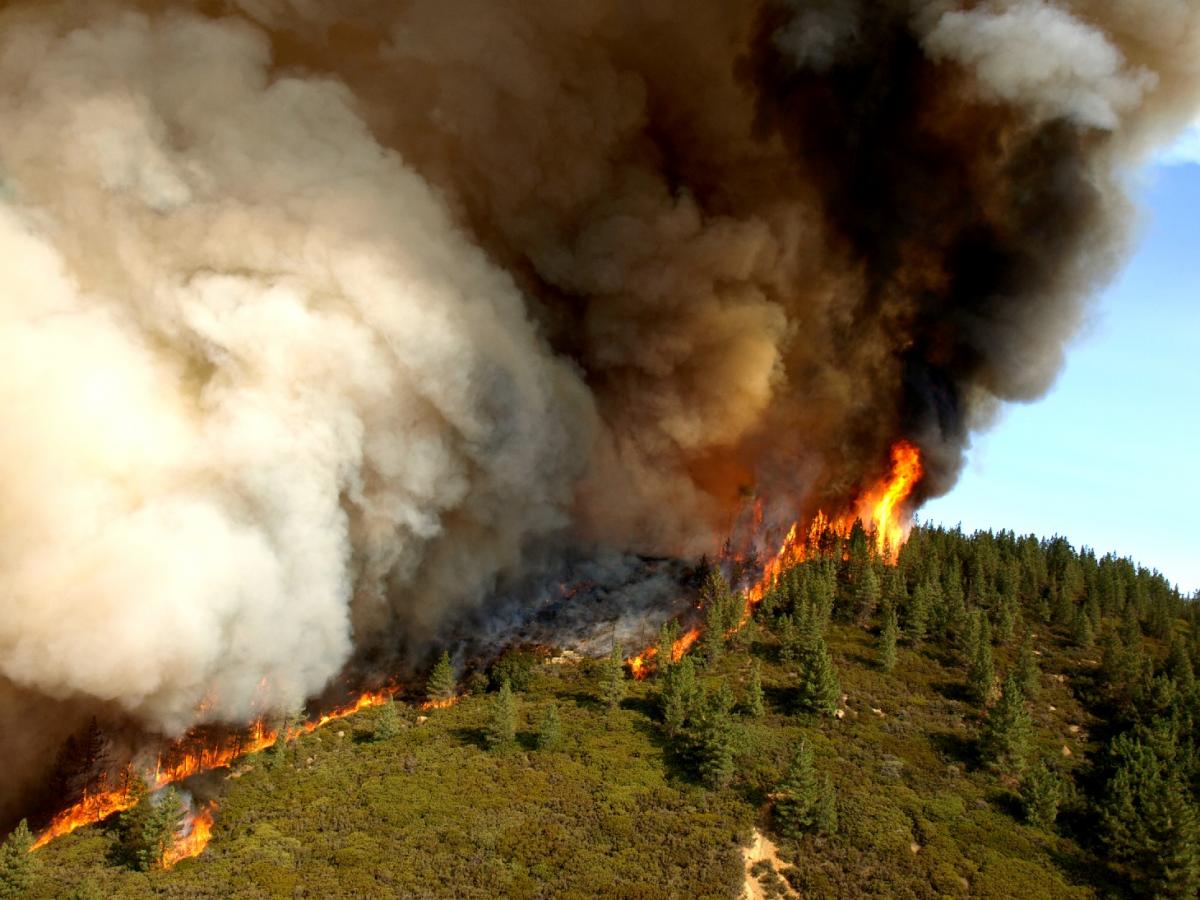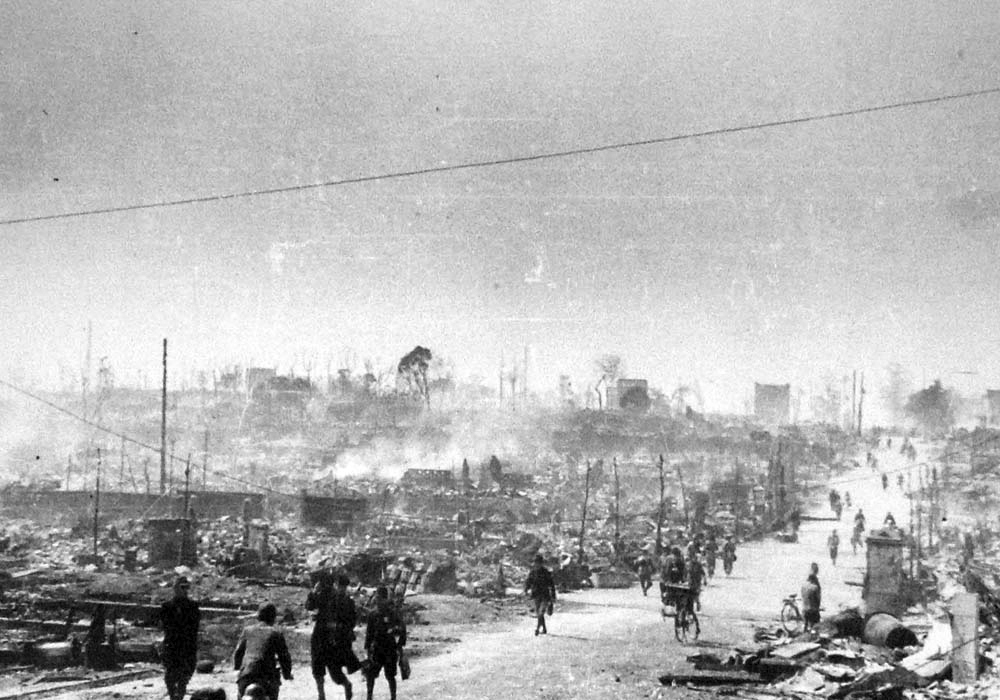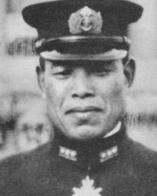|
Japan Campaign
The Japan campaign was a series of battles and engagements in and around the Japanese home islands, between Allied forces and the forces of Imperial Japan during the last stages of the Pacific campaign of World War II. The Japan campaign lasted from around June 1944 to August 1945. Air war Periodic air raids on Japan were the first attacks undertaken by Allied forces. In late 1944, these raids were followed by a major strategic bombing of cities, factories, and other war infrastructure throughout Japan, most notably: * Operation Meetinghouse raid on Tokyo (9-10 March 1945): 100,000 Japanese were killed, mostly civilians, including in the conflagration that followed the firebombing. * Bombing of Kure (24-28 July 1945): Most of the surviving large Japanese warships were lost, leaving the ''Nagato'' as the only remaining capital ship in Japan's inventory. * Atomic bombing of Hiroshima (6 August 1945): Of approximately 90,000–140,000 deaths, 20,000 were Japanese combatants a ... [...More Info...] [...Related Items...] OR: [Wikipedia] [Google] [Baidu] |
Pacific War
The Pacific War, sometimes called the Asia–Pacific War, was the theater of World War II that was fought in Asia, the Pacific Ocean, the Indian Ocean, and Oceania. It was geographically the largest theater of the war, including the vast Pacific Ocean theater, the South West Pacific theater, the Second Sino-Japanese War, and the Soviet–Japanese War. The Second Sino-Japanese War between the Empire of Japan and the Republic of China had been in progress since 7 July 1937, with hostilities dating back as far as 19 September 1931 with the Japanese invasion of Manchuria. However, it is more widely accepted that the Pacific War itself began on 7 December (8 December Japanese time) 1941, when the Japanese simultaneously invaded Thailand, attacked the British colonies of Malaya, Singapore, and Hong Kong as well as the United States military and naval bases in Hawaii, Wake Island, Guam, and the Philippines. The Pacific War saw the Allies pitted against Japan, the la ... [...More Info...] [...Related Items...] OR: [Wikipedia] [Google] [Baidu] |
Shunroku Hata
was a field marshal ('' gensui'') in the Imperial Japanese Army during World War II. He was the last surviving Japanese military officer with a marshal's rank. Hata was convicted of war crimes and sentenced to life imprisonment in 1948, but was paroled in 1954. Biography Early years Hata was a native of Fukushima Prefecture, where his father was a samurai of the Aizu Domain. At the age of 12, the family relocated to Hakodate, Hokkaidō, but at the age of 14, he was accepted into the prestigious First Tokyo Middle School. However, his father died the same year. Unable to afford the tuition, Hata enrolled in the Army Cadet School instead, going on to graduate in the 12th class of the Imperial Japanese Army Academy in 1901 as a second lieutenant in the artillery. Hata served in the Russo-Japanese War. He graduated from the 22nd class of the Army Staff College with top rankings in November 1910. Sent as a military attaché to Germany in March 1912, Hata stayed in Europe throu ... [...More Info...] [...Related Items...] OR: [Wikipedia] [Google] [Baidu] |
Conflagration
A conflagration is a large fire. Conflagrations often damage human life, animal life, health, and/or property. A conflagration can begin accidentally, be naturally caused (wildfire), or intentionally created (arson). A very large fire can produce a firestorm, in which the central column of rising heated air induces strong inward winds, which supply oxygen to the fire. Conflagrations can cause casualties including deaths or injuries from burns, trauma due to collapse of structures and attempts to escape, and smoke inhalation. Firefighting is the practice of extinguishing a conflagration, protecting life and property and minimizing damage and injury. One of the goals of fire prevention is to avoid conflagrations. When a conflagration is extinguished, there is often a fire investigation to determine the cause of the fire. Causes and types During a conflagration a significant movement of air and combustion products occurs. Hot gaseous products of combustion move upward, c ... [...More Info...] [...Related Items...] OR: [Wikipedia] [Google] [Baidu] |
Bombing Of Tokyo (10 March 1945)
On the night of 9/10 March 1945, the United States Army Air Forces (USAAF) conducted a devastating firebombing raid on Tokyo, the Japanese capital city. This attack was code-named Operation Meetinghouse by the USAAF and is known as the Great Tokyo Air Raid in Japan. Bombs dropped from 279 Boeing B-29 Superfortress heavy bombers burned out much of eastern Tokyo. More than 90,000 and possibly over 100,000 Japanese people were killed, mostly civilians, and one million were left homeless, making it the most destructive single air attack in human history. The Japanese air and civil defenses proved largely inadequate; 14 American aircraft and 96 airmen were lost. The attack on Tokyo was an intensification of the air raids on Japan which had begun in June 1944. Prior to this operation, the USAAF had focused on a precision bombing campaign against Japanese industrial facilities. These attacks were generally unsuccessful, which contributed to the decision to shift to firebombing. The ope ... [...More Info...] [...Related Items...] OR: [Wikipedia] [Google] [Baidu] |
Japan
Japan ( ja, 日本, or , and formally , ''Nihonkoku'') is an island country in East Asia. It is situated in the northwest Pacific Ocean, and is bordered on the west by the Sea of Japan, while extending from the Sea of Okhotsk in the north toward the East China Sea, Philippine Sea, and Taiwan in the south. Japan is a part of the Ring of Fire, and spans Japanese archipelago, an archipelago of List of islands of Japan, 6852 islands covering ; the five main islands are Hokkaido, Honshu (the "mainland"), Shikoku, Kyushu, and Okinawa Island, Okinawa. Tokyo is the Capital of Japan, nation's capital and largest city, followed by Yokohama, Osaka, Nagoya, Sapporo, Fukuoka, Kobe, and Kyoto. Japan is the List of countries and dependencies by population, eleventh most populous country in the world, as well as one of the List of countries and dependencies by population density, most densely populated and Urbanization by country, urbanized. About three-fourths of Geography of Japan, the c ... [...More Info...] [...Related Items...] OR: [Wikipedia] [Google] [Baidu] |
Strategic Bombing
Strategic bombing is a military strategy used in total war with the goal of defeating the enemy by destroying its morale, its economic ability to produce and transport materiel to the theatres of military operations, or both. It is a systematically organized and executed attack from the air which can utilize strategic bombers, long- or medium-range missiles, or nuclear-armed fighter-bomber aircraft to attack targets deemed vital to the enemy's war-making capability. The term terror bombing is used to describe the strategic bombing of civilian targets without military value, in the hope of damaging an enemy's morale. One of the strategies of war is to demoralize the enemy so that peace or surrender becomes preferable to continuing the conflict. Strategic bombing has been used to this end. The phrase "terror bombing" entered the English lexicon towards the end of World War II and many strategic bombing campaigns and individual raids have been described as terror bombing by comment ... [...More Info...] [...Related Items...] OR: [Wikipedia] [Google] [Baidu] |
Air Raids On Japan
Air raids conducted by Allied forces on Japan during World War II caused extensive destruction to the country's cities and killed between 241,000 and 900,000 people. During the first years of the Pacific War these attacks were limited to the Doolittle Raid in April 1942 and small-scale raids on military positions in the Kuril Islands from mid-1943. Strategic bombing raids began in June 1944 and continued until the end of the war in August 1945. Allied naval and land-based tactical air units also attacked Japan during 1945. The United States military air campaign waged against Japan began in earnest in mid-1944 and intensified during the war's last months. While plans for attacks on Japan had been prepared prior to the Pacific War, these could not begin until the long-range B-29 Superfortress bomber was ready for combat. From June 1944 until January 1945, B-29s stationed in India staged through bases in China to make a series of nine raids on targets in western Japan, but th ... [...More Info...] [...Related Items...] OR: [Wikipedia] [Google] [Baidu] |
World War II
World War II or the Second World War, often abbreviated as WWII or WW2, was a world war that lasted from 1939 to 1945. It involved the vast majority of the world's countries—including all of the great powers—forming two opposing military alliances: the Allies and the Axis powers. World War II was a total war that directly involved more than 100 million personnel from more than 30 countries. The major participants in the war threw their entire economic, industrial, and scientific capabilities behind the war effort, blurring the distinction between civilian and military resources. Aircraft played a major role in the conflict, enabling the strategic bombing of population centres and deploying the only two nuclear weapons ever used in war. World War II was by far the deadliest conflict in human history; it resulted in 70 to 85 million fatalities, mostly among civilians. Tens of millions died due to genocides (including the Holocaust), starvation, massa ... [...More Info...] [...Related Items...] OR: [Wikipedia] [Google] [Baidu] |
Empire Of Japan
The also known as the Japanese Empire or Imperial Japan, was a historical nation-state and great power that existed from the Meiji Restoration in 1868 until the enactment of the post-World War II Constitution of Japan, 1947 constitution and subsequent formation of modern Japan. It encompassed the Japanese archipelago and several colony, colonies, protectorates, League of Nations mandate, mandates, and other Dependent territory, territories. Under the slogans of and following the Boshin War and restoration of power to the Emperor from the Shogun, Japan underwent a period of industrialization and militarization, the Meiji Restoration, which is often regarded as the fastest Modernization of Japan, modernisation of any country to date. All of these aspects contributed to Japan's emergence as a great power and the establishment of Japanese colonial empire, a colonial empire following the First Sino-Japanese War, the Boxer Rebellion, the Russo-Japanese War, and World W ... [...More Info...] [...Related Items...] OR: [Wikipedia] [Google] [Baidu] |
Allies Of World War II
The Allies, formally referred to as the United Nations from 1942, were an international military coalition formed during the Second World War (1939–1945) to oppose the Axis powers, led by Nazi Germany, Imperial Japan, and Fascist Italy. Its principal members by 1941 were the United Kingdom, United States, Soviet Union, and China. Membership in the Allies varied during the course of the war. When the conflict broke out on 1 September 1939, the Allied coalition consisted of the United Kingdom, France, and Poland, as well as their respective dependencies, such as British India. They were soon joined by the independent dominions of the British Commonwealth: Canada, Australia, New Zealand and South Africa. Consequently, the initial alliance resembled that of the First World War. As Axis forces began invading northern Europe and the Balkans, the Allies added the Netherlands, Belgium, Norway, Greece, and Yugoslavia. The Soviet Union, which initially had a nonaggression pa ... [...More Info...] [...Related Items...] OR: [Wikipedia] [Google] [Baidu] |
Seiichi Itō
was an admiral in the Imperial Japanese Navy and the flag officer of the task force centered around the battleship on her final mission towards the end of World War II. Biography Early career Born in Miike County Takada Town (present day Miyama City, Fukuoka Prefecture), Itō graduated from the 39th class of the Imperial Japanese Naval Academy in 1911. He was 15th in a class of 148 cadets, and served as midshipman on the cruiser and battleship . His rise through the ranks was regular and rapid: ensign on December 1, 1912, sub-lieutenant on December 1, 1914, and lieutenant on December 1, 1917. Itō returned to the Naval Staff College in 1923, graduating from the 21st class as a lieutenant commander. Itō visited the United States from May–December 1927, and was promoted to commander on his return. He became captain on December 1, 1931, and was assigned as naval attaché to Manchukuo from March 1932-November 1933. Along with Admiral Isoroku Yamamoto, Itō, well ... [...More Info...] [...Related Items...] OR: [Wikipedia] [Google] [Baidu] |
Matome Ugaki
was an admiral in the Imperial Japanese Navy during World War II, remembered for his extensive and revealing war diary, role at the Battle of Leyte Gulf, and kamikaze suicide hours after the announced surrender of Japan at the end of the war. Biography Early career Born to a farming family in rural Akaiwa District, Okayama (now part of Okayama city, Okayama prefecture), Ugaki entered the Imperial Japanese Naval Academy on 11 September 1909Ugaki, p. 669. and graduated in its 40th class on 17 July 1912. He placed ninth out of 144 cadets in his class, and was good friends with his Naval Academy classmates Tamon Yamaguchi and Yoshio Suzuki, both of whom were killed in action during World War II. He served as a midshipman on the armored cruiser and made a training cruise to Australia aboard her. On 1 May 1913, he was transferred to the protected cruiser and was commissioned as ensign on 1 December 1913. He was assigned to the battlecruiser on 27 May 1914. World War I ... [...More Info...] [...Related Items...] OR: [Wikipedia] [Google] [Baidu] |








